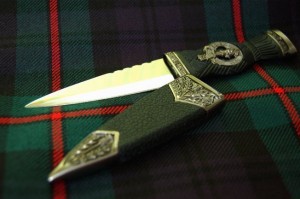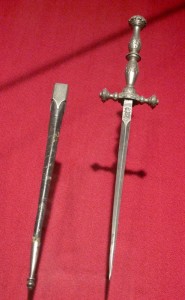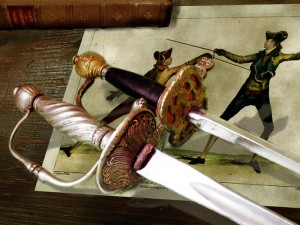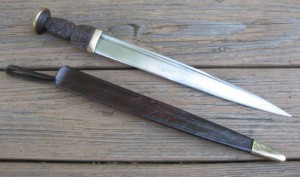My favorite thing about reading fantasy narratives has always been the weaponry. What weird and wonderful weapons will our authors place in their heroines’ hands? This week, I’m providing a list of some historically accurate weapons—and some not-so-historically-accurate ways in which women in fantasy use them.
As a young geek, I always wanted to play the boy character in whatever childish drama we were reenacting. Why? Boys got to play with swords! So, my sister would put on a princess dress and I would don armor and a sword and defend her to the death. Regrettably, most historical weapons, due to their sheer size and weight, were meant for men. What weapons, then, do we see our favorite fantasy heroines wielding? Just in case her knight in shining armor is busy at another castle, or, shockingly, she doesn’t want to wait for a man to save the day, here are some weapons used by the women of fantasy!
Distance Weapons
Composite Bow
When most people hear the word bow, they immediately picture the longbow. And while the bow is a unisex weapon, the longbow, due to its large construction and the amount of power required to draw it, would be a poor choice for the majority of female warriors. But the composite bow, which is made of several different materials instead of one or two large pieces of wood, might just be what an aspiring lady-archer needs. These layered materials usually included horn, wood and sinew. The strips of horn formed the belly of the bow, closest to the archer, with sinew used for the back and a wooden core sandwiched between the two. By exploiting the contrasting properties of these materials, bows of relatively small size achieved remarkable strength and power. In Jacqueline Carey’s Naamah’s Kiss, Moirin mac Fainche, a half-breed royal descendant and green-eyed witch, has just such a bow.
Daggers
A dagger is more than a glorified knife. It refers to a specific type of short weapon, usually with a double-edged blade. However, what the modern reader would consider short is relative. Most dagger blades are between 10 and 12 inches in length. So, while our armor-clad warrior princesses can casually carry these around like their male counterparts, what about the women in fantasy that don’t wear trousers? As a fantasy writer, I think it’s much more entertaining to consider what sort of weapons our dress-wearing ladies would utilize. Where would she put her dagger, for instance? She can’t just strap it around the waist of her very elaborate dress, complete with corset and various other accoutrements. Still, there’s nothing quite like a shiny knife to deter would-be ravishers in the night. So, what is the solution?
The Sgian Dubh
The sgian dubh, or skean dhu, is a small, single-edged knife traditionally worn in the sock as part of Scottish Highland dress. It’s very similar to a boot knife, but shorter, only three to four inches long. Although much smaller than a traditional dagger, the same problem presents itself: where to put it? Since knee socks and ball gowns tend to clash, most fantasy ladies would conceal the knife in a thigh sheath that is reached through a hidden slit in the dress. In Mercedes Lackey’s Arrow’s Flight, Talia uses this technique to arm herself during her first official ceremony as Queen’s Own Herald.
The Stiletto
Hidden weapons seem to be a very fashionable accessory for ladies in fantasy. And so we come to my personal favorite—the stiletto. No, I’m not talking about the shoe. A stiletto is a long, thin blade with three to four sides. It narrows to a wicked point that was often used to pierce mail and pass through gaps in plate armor. Sometimes known as the “assassin’s weapon” because it is so very easy to conceal, the stiletto can be disguised in the bones of a corset. Some elaborately decorated stilettos are even used as bodkins.
Swords
Despite modern versions of historical weaponry making them seem light and portable, swords are big and heavy. Two of the most common variants, broadswords and hand-and-a-half swords, are meant to be wielded by huge men in plate armor. And unlike my favorite Lady Knight, Alanna of Trebond, not every fantasy girl is lucky enough to find a magical sword that “was thinner than a broadsword, and lighter, with a broadsword’s double edge.” So, what kinds of swords would our female swashbucklers wield?
The Smallsword
Knowing how large most regular swords are, someone inevitably asks: what about the smallsword? It’s just a smaller sword, right? Sadly, no. The image conjured by the word smallsword is that of Sting from The Hobbit—a beautiful, but proportionally smaller, sword. Somewhat of a misnomer, a smallsword is actually a type of rapier developed in the 17th century as a gentleman’s status symbol and dueling weapon. Around 30 inches long and intended solely for thrusting, the smallsword typically had a stiff triangular blade, without sharpened edges. And unless one is a master fencer, it is of little use in our female hero’s self-defense.
The Dirk
So, what’s our heroine to do when she’s being confronted by a sword-swinging attacker? This might be the moment to go find that knight-errant composing sonnets to her below the tower. If, however, she would prefer to defend her own honor, then her sgian dubh is of almost no use against a sword. It is not intended as a throwing knife, so even if she throws it, she will most likely miss. What she needs is a dirk. Also of Scottish origin, the dirk is what a smallsword should be—a double-edged weapon halfway between a dagger and sword. It provides the reach of a longer weapon without the weight. It would seem Diana Gabaldon, author of Outlander, would agree. Her main character, Claire Beauchamp, occasionally wields a dirk.
Which fantasy weapon are you most eager to try? If you were writing a fantasy story, what type of weapons would your characters use? Stay tuned for my upcoming article about weapons in science fiction.
Header image courtesy of One lucky guy. Sgian dubh image courtesy of Gordan McKinlay. Stiletto image courtesy of Mike Fitzpatrick. Smallsword image courtesy of John “Jay” Glenn. Dirk image courtesy of Kenneth Grant.






